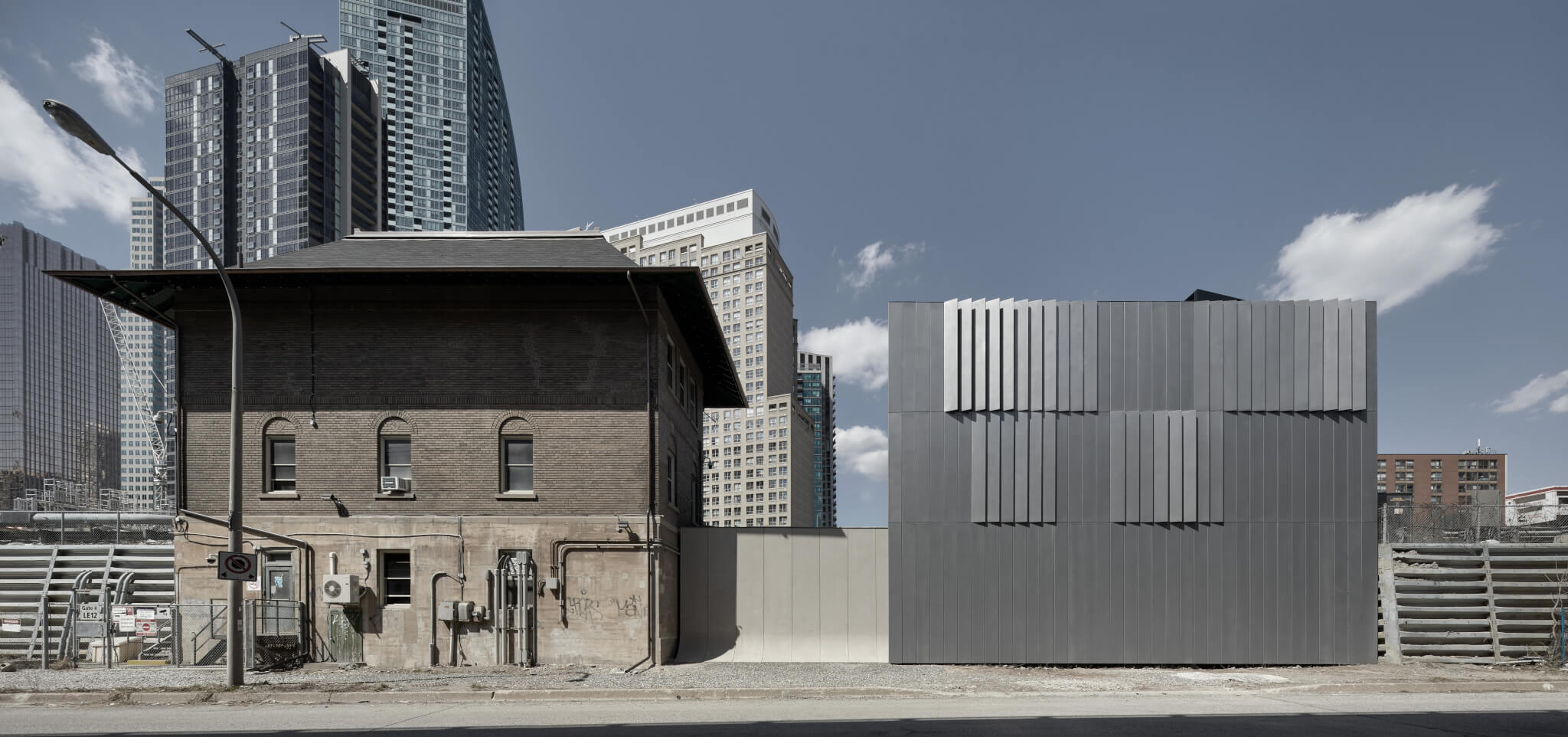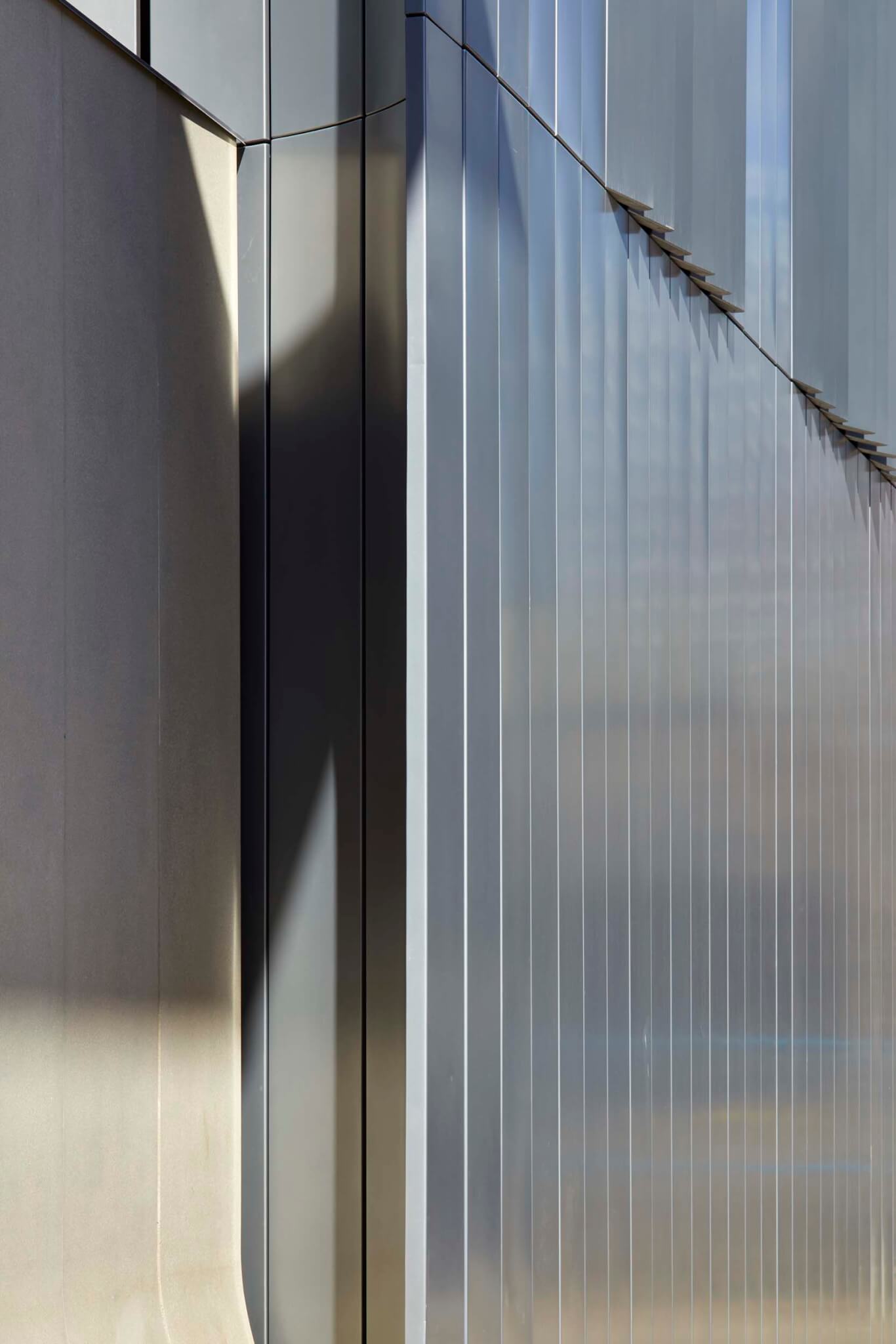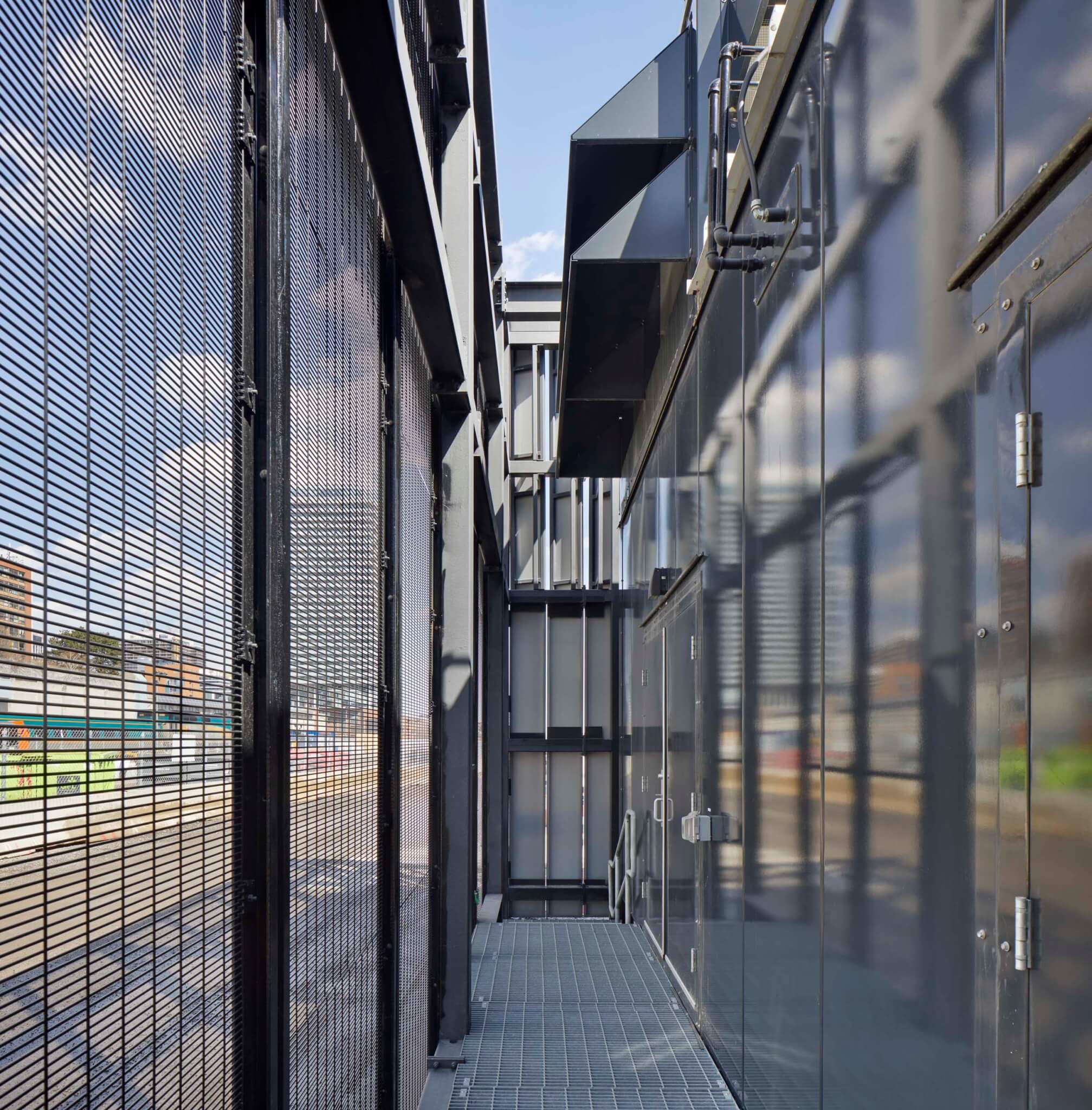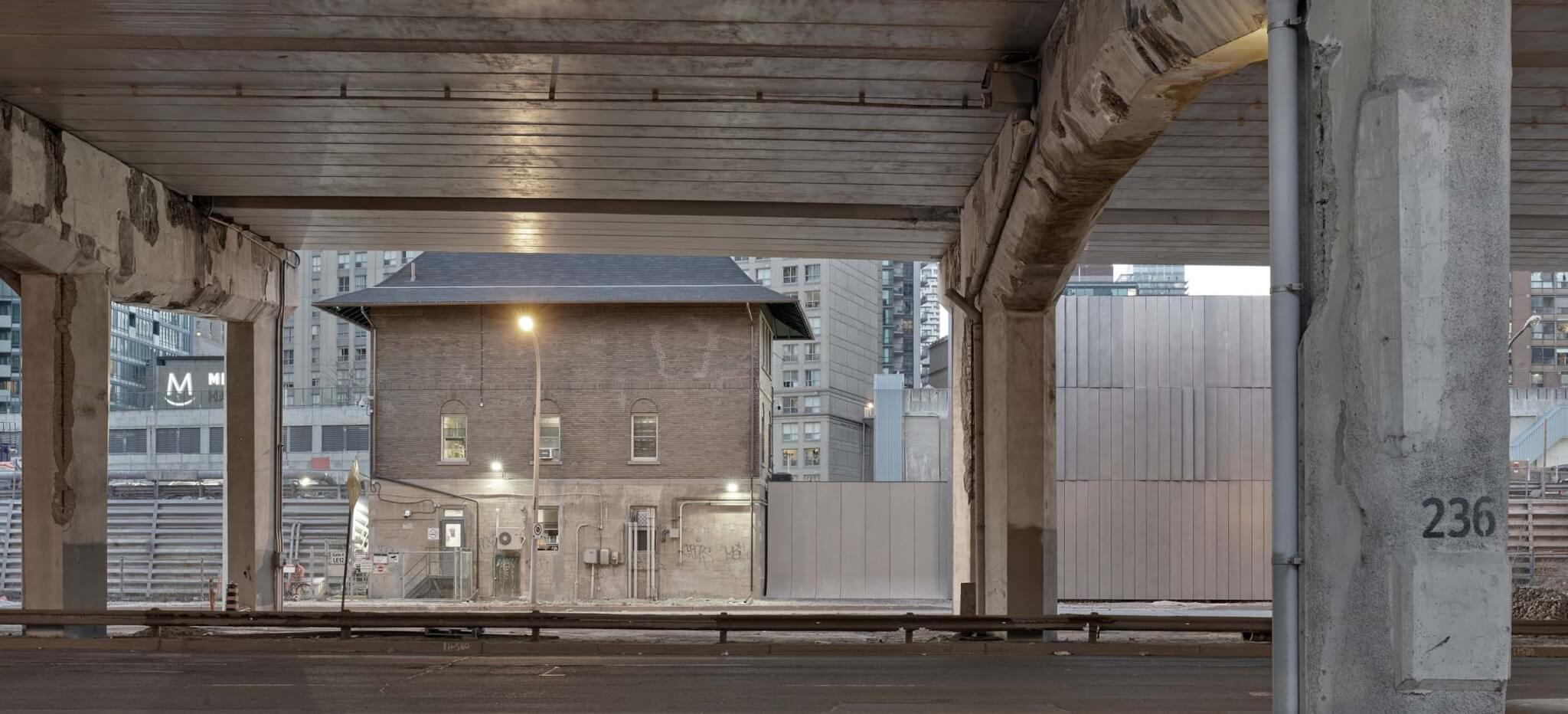Architect: RDHA
Location: Toronto
Completion Date: 2023
Toronto-based studio RDHA has designed a new emergency generator tower for Metrolinx, the agency responsible for public transit in Toronto. The generator will be put to use in emergency situations, to power Toronto’s Union Station. RDHA’s generator was built adjacent to a defunct signal tower built in 1930 to service the Canadian Pacific Railroad. The historic structure by John Wilson Orrock is notable for its Italianate details; the new generator building takes subtle cues from its neighbor.

The design team drew horizontal datum lines from each floor of the Orrock tower to organize the new building. The two buildings are connected by a scalloped retaining wall, which maintains the grade change between track and street level. The retaining wall references the arched forms found on the historic tower, and will be planted to create green space along the rail tracks.

The generator itself is enveloped in polished aluminum panels with fixed openings positioned to accommodate the system’s ventilation needs. These openings in the facade allow for passive air flow management.
Aluminum was chosen for its durability and low cost. Stainless steel was also considered for the project but was too expensive. Tyler Sharp, principal and design director of RDHA, told AN, “Aesthetically, we preferred aluminum because it would be distinctly different from the existing heritage building. It also allowed us to provide for a subtly reflective surface that helps to create a reflective shroud that subtly mirrors the image and form of the existing heritage building elevation.”

Efficient energy strategies were implemented within the occupiable portions of the generator, used by municipal employees, such as high-performing LED lighting and daylight and temperature sensors that optimize energy usage.

The building is supported by a structural system consisting of concrete piles and walls. A steel frame supports the walls and the facade panels are hung from a lighter steel sub-frame.
Construction was complicated by access to the site, which was impinged by the proximity to the Gardiner Expressway and active rail lines.
Sharp also said it was challenging working with local contractors “who are not used to putting design effort and quality into a piece of infrastructure like this.” He added, “A primary concept for this project, on a general level, was to elevate the design status of what are typically forgotten or hidden pieces of civic infrastructure.”
Project Specifications
-
- Architect: RDHA
- Location: Toronto
- Completion Date: 2023
- Structural Engineer: Entuitive
- Mechanical Engineer: Smith + Andersen
- Electrical Engineer: Smith + Andersen
- Heritage Consultant: ERA
- General Contractor: Black & McDonald


